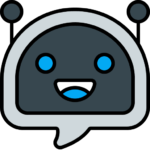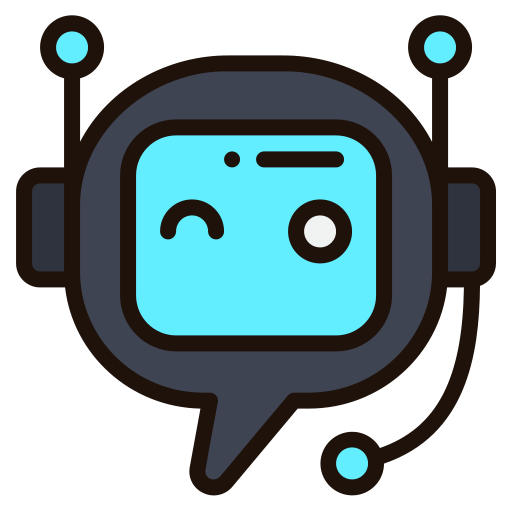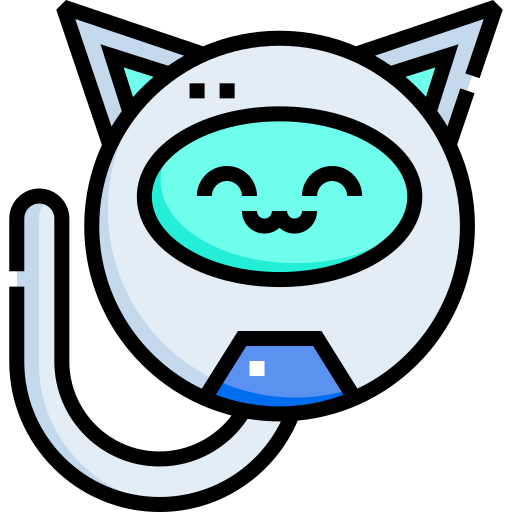
Building an AI-driven chatbot for your website requires a step-by-step approach that involves designing the chatbot, selecting the right AI technologies, and integrating it into your website. Here’s a detailed guide to help you get started:
Step 1: Define Chatbot Objectives and Use Cases:
- Clearly define the purpose of your chatbot. Determine its primary objectives and the specific tasks it will handle, such as answering FAQs, providing customer support, or assisting with product recommendations.
- Identify the main use cases your chatbot will address. This will help you design the conversation flow and train the AI model effectively.
Step 2: Choose a Chatbot Building Platform:
- Select a chatbot development platform that aligns with your technical expertise and requirements. Some popular chatbot frameworks include Dialogflow, Botpress, Microsoft Bot Framework, and Rasa.
Step 3: Design the Conversation Flow:
- Create a conversation flowchart that outlines how users will interact with the chatbot. Determine the different user inputs and possible bot responses for each use case.
Step 4: Choose AI Technology:
- Decide on the AI technologies you’ll use for Natural Language Processing (NLP) and Natural Language Understanding (NLU). Popular choices include:
- Pre-built Platforms: Dialogflow (by Google), LUIS (by Microsoft), Watson Assistant (by IBM) are pre-built platforms that offer NLP and NLU capabilities.
- Custom AI Models: If you have the resources and expertise, you can build custom AI models using libraries like spaCy, TensorFlow, or PyTorch.
Step 5: Train the AI Model:
- If you choose a pre-built platform, provide sample conversations and data to train the AI model. This data should cover different user inputs and the corresponding correct responses.
- If you’re building a custom AI model, you’ll need a substantial dataset of labeled examples to train your NLP and NLU models effectively.
Step 6: Develop the Chatbot:
- Use the selected chatbot development platform and AI technology to implement the conversation flow and integrate the trained AI model.
- Add necessary functionalities such as handling user inputs, providing appropriate responses, and error handling.
Step 7: Test and Optimize:
- Thoroughly test your chatbot to identify and fix any issues. Ensure it can handle various user inputs and scenarios.
- Continuously optimize the chatbot based on user feedback and real-world interactions.
Step 8: Deploy the Chatbot on Your Website:
- Once your chatbot is ready, deploy it on your website. This can involve embedding the chatbot within a widget, using a chatbot integration plugin, or utilizing an API provided by the chatbot platform.
Step 9: Monitor and Improve:
- Regularly monitor the chatbot’s performance and user interactions. Analyze user feedback to identify areas of improvement.
- Use analytics to track key metrics like user engagement, successful interactions, and customer satisfaction.
Step 10: Provide Human Backup:
- While an AI-driven chatbot can handle many queries, there will be cases where it might struggle to understand or provide appropriate responses. Ensure there is a smooth transition to human support when needed.
Building an effective AI-driven chatbot is an iterative process. Continuously refine and update the chatbot based on user feedback and changing requirements to provide the best user experience on your website.
Skills required to Build an AI Driven Chatbot

Building an AI-driven chatbot can vary in difficulty depending on several factors, including the complexity of the chatbot’s functionality, the level of AI integration, the available resources, and the technical expertise of the development team. Let’s explore the details of the various aspects that can influence the difficulty of building an AI-driven chatbot:
1. Functionality Complexity:
- Basic chatbots that handle simple FAQs or provide predefined responses are relatively easier to build.
- As you add more features and functionality, such as natural language understanding, context awareness, and complex conversation flows, the difficulty increases.
2. AI Integration:
- Using pre-built AI platforms like Dialogflow, LUIS, or Watson Assistant can make the process easier since they provide pre-trained models and tools for natural language processing and understanding.
- Developing custom AI models from scratch requires more expertise and resources and can be significantly more challenging.
3. Data Availability:
- The availability of labeled training data is crucial for training the AI model. If you have a large dataset with labeled examples, it can simplify the training process.
- Collecting and annotating data can be time-consuming and challenging, especially for specific industries or use cases with limited existing datasets.
4. Technical Expertise:
- Building an AI-driven chatbot requires a team with the necessary technical skills, including programming (e.g., Python, JavaScript), knowledge of AI frameworks and libraries (e.g., TensorFlow, spaCy), and expertise in natural language processing (NLP) and machine learning.
- If your team lacks the expertise, hiring or collaborating with AI specialists can be essential but might add to the overall cost and complexity.
5. Integration with Existing Systems:
- If the chatbot needs to integrate with your website, databases, or other backend systems, it can increase the complexity of development.
- Ensuring seamless communication and data flow between the chatbot and other systems may require additional effort.
6. User Experience and Design:
- Creating a chatbot with a great user experience and natural-sounding responses can be challenging. The chatbot needs to understand user intents accurately and provide appropriate, context-aware responses.
- Iterative design and user testing are essential to refine the chatbot’s conversation flow and improve its overall usability.
7. Continuous Improvement and Maintenance:
- Building a chatbot is not a one-time task. Continuous monitoring, improvement, and maintenance are necessary to keep the chatbot relevant and effective.
- User feedback and analytics need to be analyzed regularly to identify areas for improvement and to update the chatbot accordingly.
In summary, building an AI-driven chatbot can be relatively straightforward for simple use cases using pre-built platforms. However, as the functionality and complexity increase, it becomes more challenging, requiring significant technical expertise, data availability, and iterative development processes. Therefore, it’s essential to plan and allocate resources accordingly to achieve the desired level of AI integration and user experience for your chatbot.






